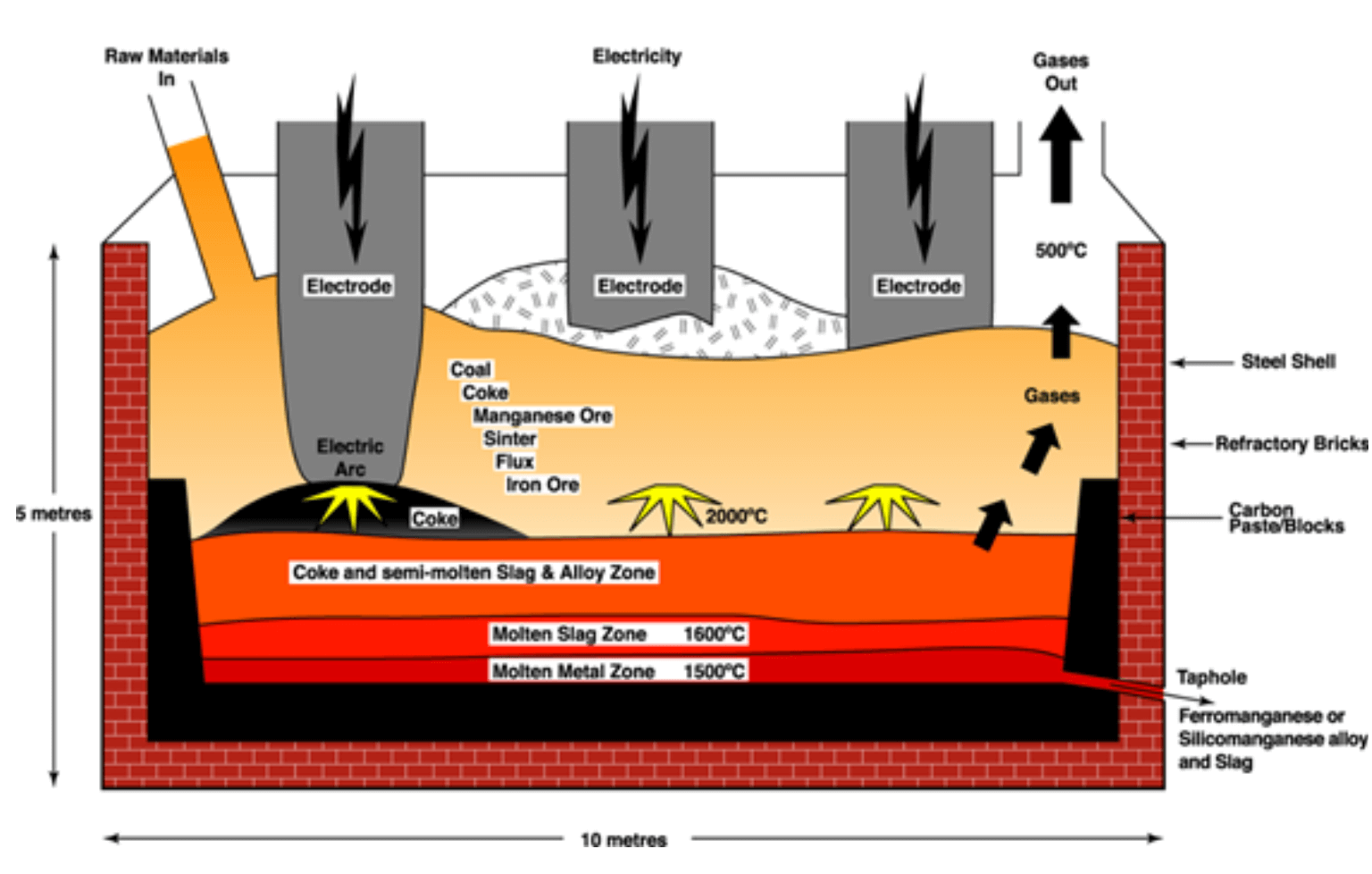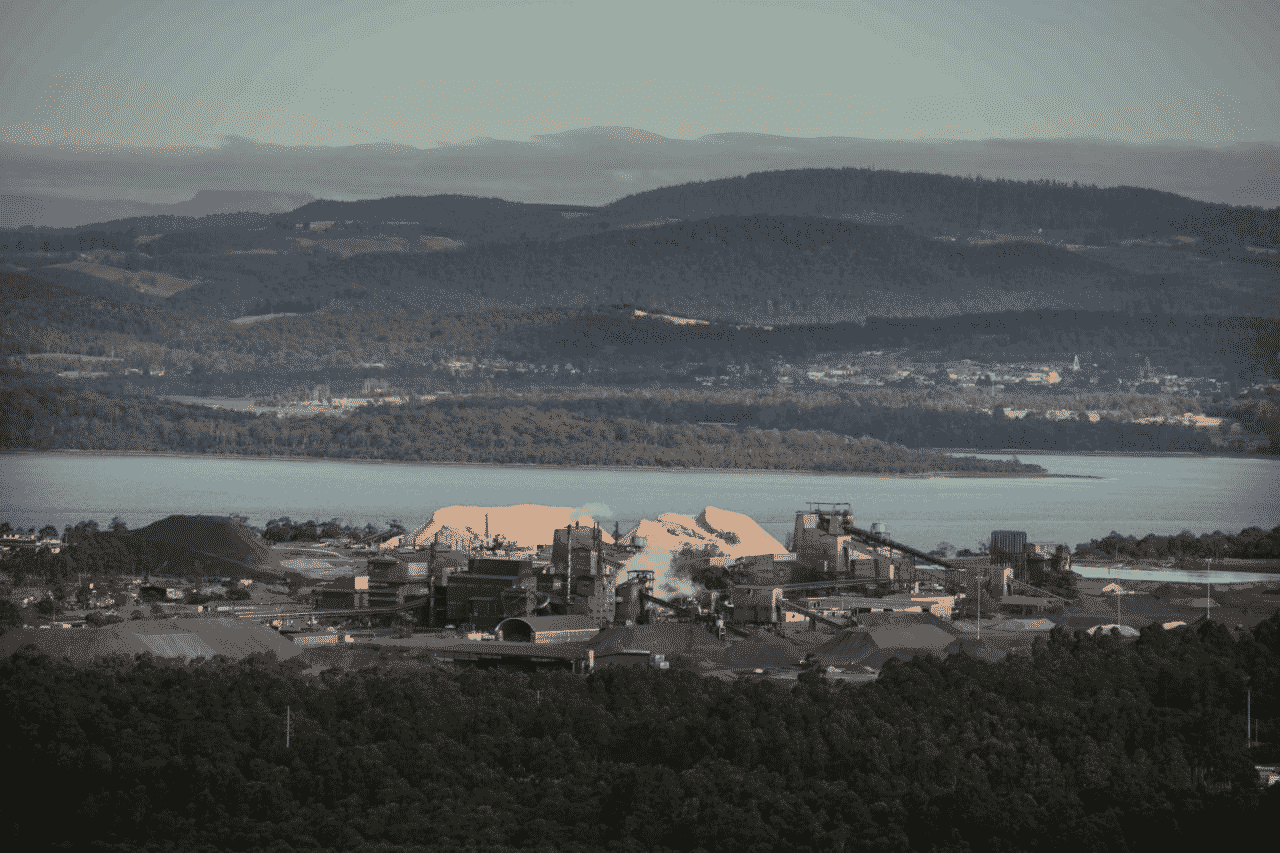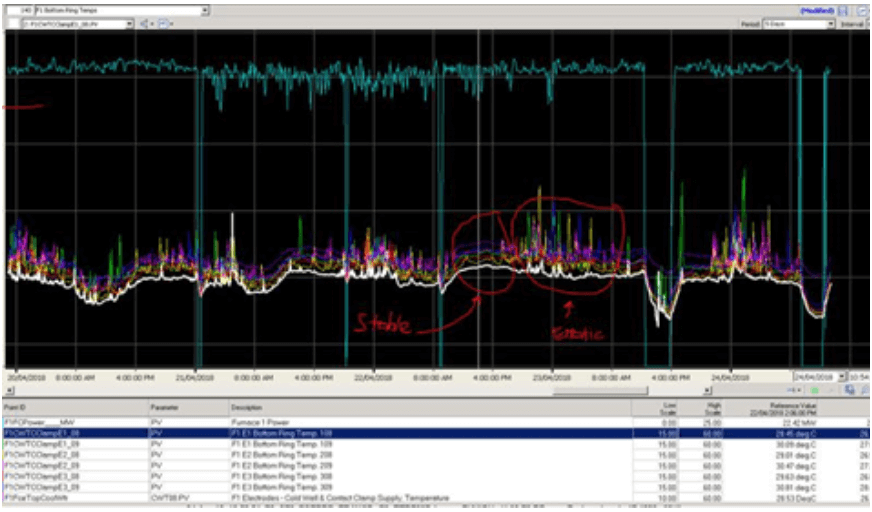The Problem:
A manganese alloy smelter in Tasmania was experiencing two to three weeks lost production several times per year due to due to arc furnace filler section liner rupture.
Over time the conditions in an electrode arc furnace deteriorate and cause the filler liner jacket to rupture slightly and leak, compromising the efficiency of furnace operation. This was not an instantaneous event. Typically, the wear related leak was not detected until some time later when it caused filler section rupture resulting in days of lost production.
The operation was recording about 10 filler liner jacket failures per year.
The filler section that was prone to rupture/leakage was located on the roof of the furnace.

The Solution:
The solution was a FORESTALL algorithm consisting of the following variables:
PETRA received 296 GB of data which included operational tags (400+ individual tags) from the data historian as well as laboratory assay data showing fines content in the coke, and moisture in the feed, as well as timestamps for filler section failures for the last 5 years.
The first step was understanding the problem followed by the merging and compilation of data and advanced feature engineering.
8200 engineered features (derived variables) we derived from the raw data and automatically analysed for importance to filler section failure which included:
- fines content in the coke (from laboratory data)
- local atmospheric moisture content and rainfall
- the number of threshold breaches and duration since last shutdown (high temperature (>50oC) and high moisture content (>20%) breaches)
- deviations in all the PI tag trends over numerous time periods (1 – 14 days previous)
The result was the generation of 8200 engineered features (derived variables) that were then automatically evaluated for inclusion in the FORESTALL model.

The Implementation Method
This case study highlighted the effective use of upstream data including weather factors and cumulative engineered features (derived variables)
Highly useful and predictive model inputs were created from “engineered features”. These were derived from raw data and information, and when combined in a machine learning model act to automatically identify root causes for maintenance engineers.

The Results:
FORESTALL successfully predicted filler liner jacket failure 7 days in advance at 82% accuracy.
FORESTALL is available now for demonstration, please contact us to arrange a walk through.
